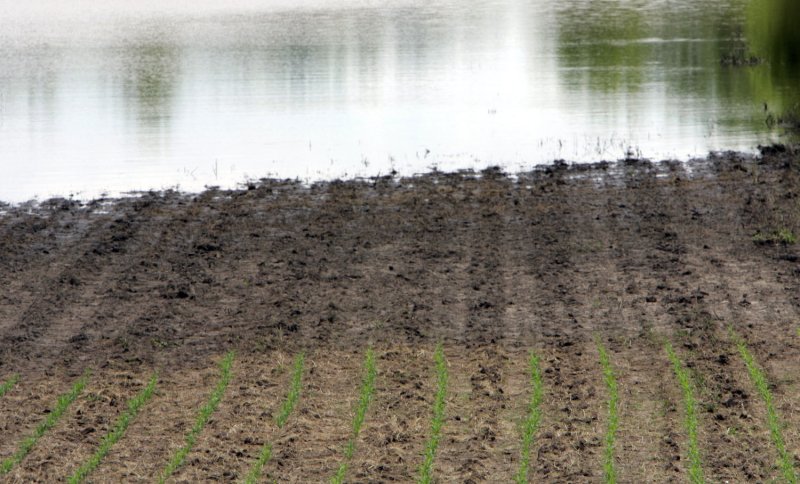In a new study, researchers say adjustments will need to be made by farmers to offset nutrient losses due to climate change. Photo by Mark Cowan/UPI |
License Photo
Aug. 4 (UPI) -- Scientists from Lancaster University suggest major changes in agricultural practices are needed to offset increases in nutrient losses due to climate change.
The study, published this week in Nature Communications, shows that phosphorus losses will continue to increase due to climate change unless major changes in agricultural practices are made.
Repeated, damaging storm events as a result of climate change have increased the amount of nutrient losses in runoff from agricultural farms.
Farmers already are taking measures to conserve nutrients from being lost to runoff but researchers warn it may not be enough.
"The warmer, wetter winters predicted for the future will result in more phosphorus transferred from agricultural land into the rivers and ultimately the oceans," Professor Phil Haygarth, of the Lancaster Environment Center, said in a press release.
"Although farmers are already doing what they can to prevent these losses, the currently adopted measures are not likely to be enough to offset the increase expected under climate change. This paper should alert policy makers and government to the help and support that farmers will need to achieve the scale of agricultural change that may be necessary to keep up with the increase in pollution due to climate change."
Fertilizers and manure that is washed off in storms are a major source of nutrients making up more than 60 percent of the nitrogen and 25 percent of the phosphorus in rivers coming from agriculture.
Although phosphorus and nitrogen are essential to crop and animal growth, too much of it can cause algae blooms in rivers and lakes that suffocate fish and other organisms.
"State-of-the-art high resolution climate models were used in this project alongside the latest UKCP09 climate projections," Dr. Pete Falloon, of the Met Office Hadley Center, said.
"While rainfall intensity was more realistically predicted by the high-resolution climate models, particularly for summer convective storms, these storms do not make a significant difference to summer phosphorus losses. Our study therefore showed that the main factor driving increased future phosphorus losses was the projected increase in winter rainfall."















